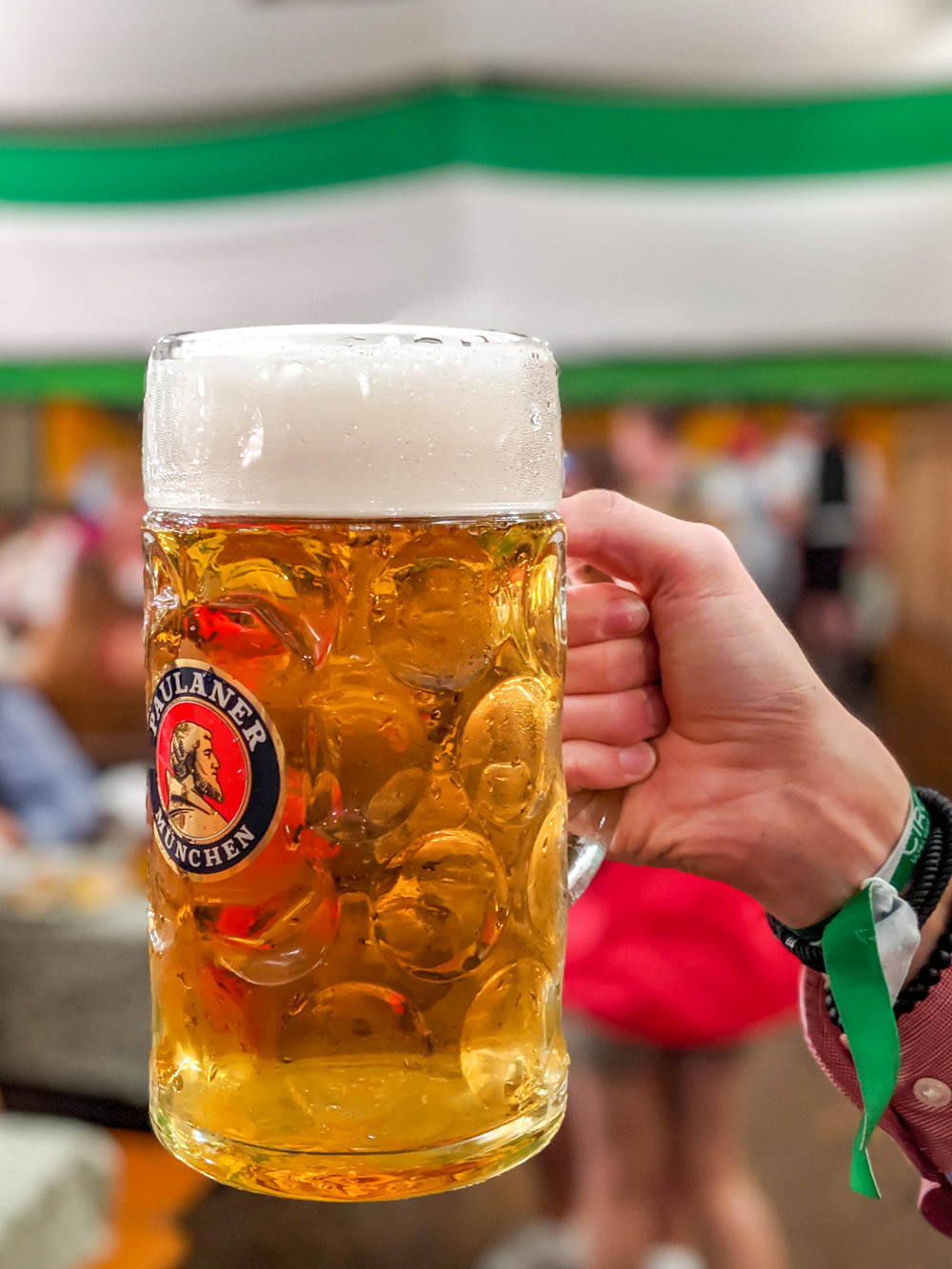Volkswurst Stories
Learn a little more about Germany with Volkswurst!


- October 14 2024
- Volkswurst
Oktoberfest: The Ultimate Celebration of Bavarian Culture
Yes, it's Oktoberfest time! Every year, millions of people gather in Munich to celebrate Oktoberfest, the largest beer festival in the world. This iconic event is a vibrant celebration of Bavarian culture, attracting visitors from around the globe who come to experience the festive atmosphere, traditional attire, delicious food, and, of course, plenty of beer. Oktoberfest is more than just a beer festival; it’s a sensory delight and a cultural immersion into Bavaria’s rich history and customs.
Oktoberfest Traditions: More Than Just Beer
Oktoberfest may be best known for its beer, but the festival offers so much more than steins of frothy goodness. From traditional Bavarian music to cultural parades and agricultural exhibitions, Oktoberfest brings the best of Bavaria’s traditions to life. The festival features bustling beer tents, energetic folk music, and the lively sounds of people raising their steins to toast “Prost!” under the sounds of oom-pah bands.
Beyond the beer, Oktoberfest is a visual spectacle. Festival-goers wear traditional dirndls and lederhosen, embodying the spirit of Bavaria. The aroma of grilled sausages, pretzels, and roasted pork fills the air, inviting everyone to indulge in the delicious flavors of Bavarian cuisine.
Beer Tents: The Heart of Oktoberfest
At the core of Oktoberfest are the famous beer tents, each one a vibrant hub of activity, laughter, and camaraderie. These massive tents, operated by Munich’s six major breweries, serve a special Oktoberfest beer that’s brewed exclusively for the festival. It’s a rich, full-bodied lager with at least 6% alcohol, served in one-liter steins known as Maß.
Inside the tents, visitors are treated to traditional Bavarian folk music that gets everyone singing and dancing. Whether it’s the familiar tunes of oom-pah bands or spontaneous chicken dances, the beer tents are alive with energy. Giant pretzels, gingerbread hearts, and mugs of foamy beer are passed around as people join in to celebrate Bavarian culture together.
Lederhosen: From Workwear to Tradition
No Oktoberfest experience is complete without traditional Bavarian attire, and lederhosen are a big part of the festival’s fashion. Contrary to popular belief, lederhosen weren’t originally a symbol of Bavarian culture. In fact, they were introduced in the 19th century as workwear for men who labored in the Alps.
The lederhosen were designed for durability and comfort, made from leather to withstand the physical demands of farm and forest work. Over time, however, lederhosen evolved beyond practicality. By the early 20th century, they became a symbol of German culture, particularly in Bavaria, where they are now worn as a mark of Bavarian identity.
Today, lederhosen are a must-have for Oktoberfest attendees and are embraced as a popular costume that connects wearers to Bavarian tradition. Paired with loferl (calf warmers) and trachten shirts, lederhosen create a festive look that’s celebrated by men and women alike.
Dirndls: A Timeless Bavarian Dress
Another quintessential aspect of Oktoberfest fashion is the dirndl, a traditional dress worn primarily in Bavaria and Austria. The dirndl is composed of several key elements:
- Mieder (bodice): The fitted top, often laced up in the front or on the side, is designed to flatter the figure.
- Bluse (blouse): A short-sleeved blouse worn underneath the bodice, with puffed sleeves and a neckline that ranges from modest to more revealing.
- Rock (skirt): The full skirt can be knee-length or longer, creating a feminine silhouette.
- Schürze (apron): The apron, tied around the waist, is an integral part of the dirndl. The position of the apron knot can even indicate the wearer’s marital status—left for single, right for married.
While the dirndl was once traditional attire for working women in rural Bavaria, it has become a fashionable statement worn during festivals and cultural events like Oktoberfest. The dirndl is celebrated for its beauty and practicality, reflecting the Alpine regions' heritage and style.
Bavarian Food: A Feast for the Senses
Food plays a central role at Oktoberfest, with stalls and beer tents offering an array of Bavarian specialties that perfectly complement the beer. The aromas of freshly grilled Würste (sausages), Hendl (roast chicken), Schweinshaxe (pork knuckle), and Brezeln (pretzels) fill the festival grounds, tempting visitors to indulge in the hearty flavors of German cuisine.
Popular dishes like Knödel (dumplings) and sauerkraut are served alongside roasted meats, providing a filling and satisfying meal. Whether you’re enjoying a juicy Bratwurst or a crispy Schweinshaxe, the food at Oktoberfest is an essential part of the experience, offering something for every palate.
Oktoberfest Around the World
While the original Oktoberfest is held in Munich, its popularity has inspired similar celebrations worldwide. Cities across the globe—from Berlin to Cincinnati—now host their own Oktoberfest festivals, showcasing Bavarian food, beer, and music. These global Oktoberfests offer people a taste of Bavaria’s cultural heritage without having to travel to Munich, keeping the spirit of Gemütlichkeit (a sense of coziness and good cheer) alive.
Conclusion: Prost to Oktoberfest!
Oktoberfest is more than just a beer festival—it’s a celebration of Bavarian tradition, food, and culture. From the lively beer tents to the delicious aromas of Bavarian dishes, every aspect of Oktoberfest is designed to bring people together in a joyous celebration. So whether you’re donning your lederhosen or dirndl in Munich or joining in a local Oktoberfest, raise your stein and toast to the world’s largest and most spirited beer festival. Prost!
Leave your thought here
Your email address will not be published. Required fields are marked *